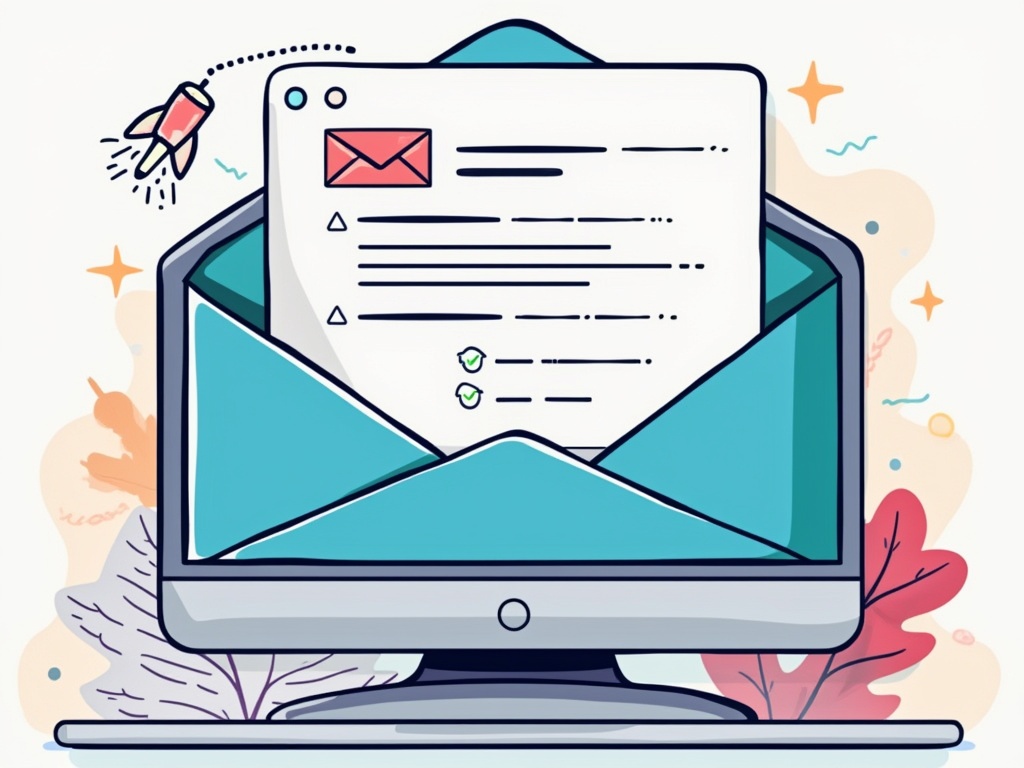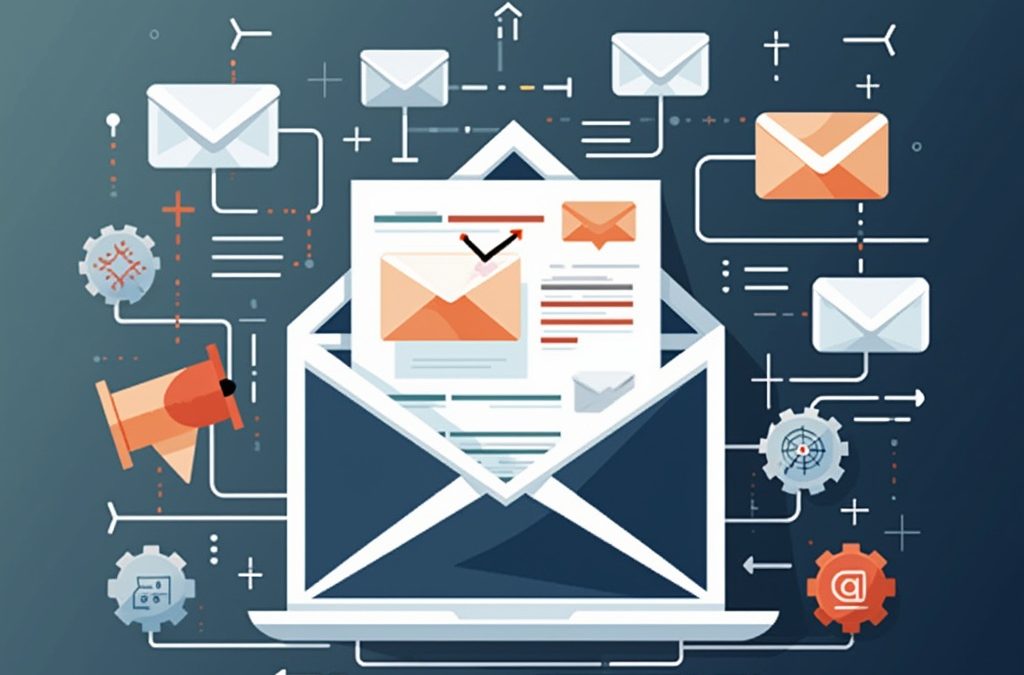Email marketing automation tools have revolutionized how businesses connect with their audience. These powerful platforms streamline campaigns, personalize content, and optimize engagement, making them essential for modern marketers aiming to maximize their email strategies.
Key Takeaways:
- Mailchimp offers user-friendly automation for businesses of all sizes
- HubSpot integrates email automation with comprehensive CRM features
- ActiveCampaign excels in advanced segmentation and personalization
- Klaviyo specializes in e-commerce-focused email automation
- Sendinblue provides affordable automation with robust features
1. Mailchimp: User-Friendly Automation for All
Mailchimp has established itself as a go-to solution for businesses seeking straightforward yet effective email automation. Its intuitive interface makes it accessible for beginners while offering enough depth for experienced marketers.
Key features of Mailchimp include:
- Easy-to-use drag-and-drop email builder
- Pre-built automation workflows
- Behavioral targeting options
- Integration with popular e-commerce platforms
Mailchimp’s strength lies in its ability to simplify complex processes, making it an excellent choice for small to medium-sized businesses looking to implement marketing automation fundamentals without a steep learning curve.

2. HubSpot: Comprehensive CRM and Email Automation
HubSpot offers a comprehensive marketing suite that includes powerful email automation tools integrated with its CRM platform. This integration allows for seamless alignment between sales and marketing efforts.
Standout features of HubSpot’s email automation include:
- Advanced segmentation based on CRM data
- A/B testing capabilities
- Smart content personalization
- Detailed analytics and reporting
HubSpot’s all-in-one approach makes it ideal for businesses looking to implement sophisticated email marketing automation strategies as part of a broader inbound marketing strategy.
3. ActiveCampaign: Advanced Segmentation and Personalization
ActiveCampaign shines in its ability to create highly personalized customer experiences through advanced segmentation and automation. It’s particularly well-suited for businesses that prioritize customer relationship management.
Key capabilities of ActiveCampaign include:
- Machine learning-powered predictive sending
- Site tracking for behavior-based automation
- Dynamic content customization
- Multichannel marketing automation
The platform’s focus on data-driven personalization makes it an excellent choice for marketers looking to create highly targeted and relevant email campaigns.
4. Klaviyo: E-commerce Focused Automation
Klaviyo has carved out a niche as the go-to platform for e-commerce businesses seeking powerful email automation. Its deep integration with popular e-commerce platforms sets it apart from more general-purpose tools.
Standout features of Klaviyo include:
- Abandoned cart recovery automation
- Product recommendation emails
- Customer lifetime value predictions
- Advanced segmentation based on purchase history
For online retailers looking to automate lead nurturing and qualification specific to e-commerce, Klaviyo offers unparalleled capabilities tailored to their needs.
5. Sendinblue: Affordable Automation with Robust Features
Sendinblue offers a cost-effective solution for businesses seeking comprehensive email automation without breaking the bank. Despite its affordability, it doesn’t skimp on features.
Key offerings from Sendinblue include:
- Unlimited contacts on all plans
- Transactional email capabilities
- SMS marketing integration
- Advanced segmentation and personalization
Sendinblue’s competitive pricing and feature-rich platform make it an attractive option for small businesses and startups looking to leverage email automation without a significant financial investment.
Choosing the Right Email Automation Tool
Selecting the ideal email automation tool depends on your specific business needs, budget, and technical expertise. Consider these factors when making your decision:
- Ease of use and learning curve
- Integration capabilities with your existing tech stack
- Scalability as your business grows
- Pricing structure and affordability
- Specific features that align with your marketing goals
By carefully evaluating these aspects and aligning them with your marketing objectives, you can choose the email automation tool that will best drive your business forward and enhance your customer engagement strategies.
Sources:
FAQs
1. What is email marketing automation and how does it benefit my business?
Email marketing automation involves using software to send timely, personalized emails to your audience without manual effort. This automation helps improve customer engagement, streamline communication, and drive conversions by delivering relevant messages based on customer behavior. It allows businesses to send welcome sequences, purchase follow-ups, and other targeted emails, enhancing the overall customer journey and efficiency of marketing campaigns.
2. How do I choose the right email automation tool for my business?
Choosing the right email automation tool depends on several factors, including your business size, budget, technical expertise, and specific marketing goals. Consider the ease of use, integration capabilities with your existing tech stack, scalability, pricing structure, and the specific features that align with your marketing objectives. For example, if you are in e-commerce, Klaviyo might be ideal, while HubSpot is better suited for businesses needing comprehensive CRM integration.
3. What are the key features I should look for in an email automation tool?
When selecting an email automation tool, look for features such as advanced segmentation, behavioral targeting options, integration with popular e-commerce platforms, and robust analytics. Other important features include easy-to-use interfaces, pre-built automation workflows, A/B testing capabilities, and detailed reporting. Additionally, consider tools that offer SMS integration, transactional email capabilities, and multi-channel marketing automation to ensure you can engage your audience across various channels.
4. How do email automation tools like Mailchimp and ActiveCampaign differ?
Mailchimp and ActiveCampaign cater to different needs and user profiles. Mailchimp is user-friendly and ideal for businesses of all sizes, offering easy-to-use drag-and-drop email builders and pre-built automation workflows. It is particularly good for small to medium-sized businesses and those new to email marketing automation. ActiveCampaign, on the other hand, excels in advanced segmentation and personalization, making it suitable for businesses that prioritize customer relationship management and need more sophisticated automation capabilities.
5. What is the cost of using email automation tools, and are there any free options?
The cost of email automation tools varies widely depending on the platform and the features you need. Some tools like Mailchimp and Brevo offer free plans with limited features, while others like HubSpot and ActiveCampaign require a monthly subscription that can range from $20 to several hundred dollars. Sendinblue is known for its cost-effective solution with unlimited contacts on all plans, making it a budget-friendly option. Always check the pricing structure and ensure it aligns with your budget and business needs.
People Also Ask
What are the key features to look for in an email automation tool?
When selecting an email automation tool, there are several key features to consider that can significantly impact your marketing strategy.
- Ease of Use and Learning Curve: Look for tools with intuitive interfaces, such as Mailchimp, which offers a user-friendly drag-and-drop email builder and pre-built automation workflows. This is particularly important for small to medium-sized businesses or those new to email marketing automation[1][3][5].
- Integration Capabilities: Ensure the tool integrates well with your existing tech stack. For example, HubSpot integrates email automation with its comprehensive CRM platform, and Klaviyo has deep integrations with popular e-commerce platforms like Shopify[1][3][5].
- Scalability: Choose a tool that can grow with your business. ActiveCampaign, for instance, offers advanced segmentation and personalization features that are scalable for businesses of various sizes[1][3][5].
- Pricing Structure and Affordability: Consider the cost and whether it fits your budget. Sendinblue is a cost-effective option that offers robust features without breaking the bank[1][3][5].
How do I choose the right email automation tool for my e-commerce business?
For e-commerce businesses, selecting the right email automation tool is crucial for optimizing customer engagement and sales.
- E-commerce Specific Features: Look for tools that specialize in e-commerce, such as Klaviyo. Klaviyo offers features like abandoned cart recovery automation, product recommendation emails, and advanced segmentation based on purchase history[1][3][5].
- Integration with E-commerce Platforms: Ensure the tool integrates seamlessly with your e-commerce platform. Klaviyo, for example, has deep integrations with Shopify and other popular e-commerce platforms[1][3][5].
- Personalization and Segmentation: Opt for tools that offer advanced personalization and segmentation capabilities. ActiveCampaign and Mailchimp also provide these features, but Klaviyo is particularly tailored for e-commerce needs[1][3][5].
What are the benefits of using advanced segmentation in email automation?
Advanced segmentation is a powerful feature in email automation that can significantly enhance the effectiveness of your campaigns.
- Personalized Customer Experiences: Tools like ActiveCampaign and Mailchimp allow for advanced segmentation, enabling you to create highly personalized customer experiences. This can include machine learning-powered predictive sending and dynamic content customization[1][3][5].
- Increased Engagement: By segmenting your audience based on behavior, preferences, and other criteria, you can increase the relevance of your emails, leading to higher open rates and engagement[1][3][5].
- Better ROI: Personalized and targeted emails often result in better conversion rates and a higher return on investment (ROI) compared to generic, unsegmented emails[1][3][5].
How can I ensure high email deliverability with my automation tool?
High email deliverability is critical for the success of your email marketing campaigns.
- Use Double Opt-in: Tools like Brevo use double opt-in by default, which helps in maintaining a clean and engaged email list. This reduces the risk of spam labels and improves deliverability[1].
- Separate IP Addresses: Brevo allows you to divide transactional and marketing emails into separate streams with different IP addresses, which can improve deliverability rates[1].
- Exclude Unengaged Subscribers: Automatically excluding unengaged subscribers can help in maintaining a healthy email list and ensuring higher open rates and deliverability[1].
What are some cost-effective email automation tools for small businesses?
For small businesses, finding a cost-effective email automation tool is essential.
- Sendinblue: Offers unlimited contacts on all plans, transactional email capabilities, and advanced segmentation at an affordable price. It is a competitive option for small businesses and startups[1][3][5].
- Mailchimp: Provides a free plan with limited features and paid plans starting at $13/month. It is user-friendly and offers enough depth for both beginners and experienced marketers[1][3][5].
- EmailOctopus: The free plan supports up to 2,500 subscribers and 10,000 emails per month, making it a budget-friendly option for small businesses[1][5].

